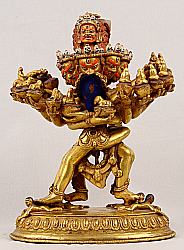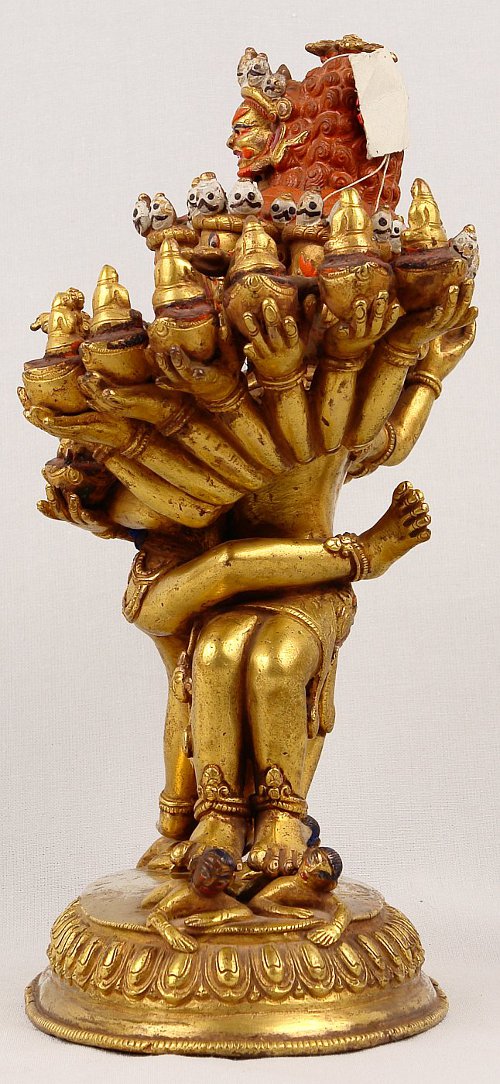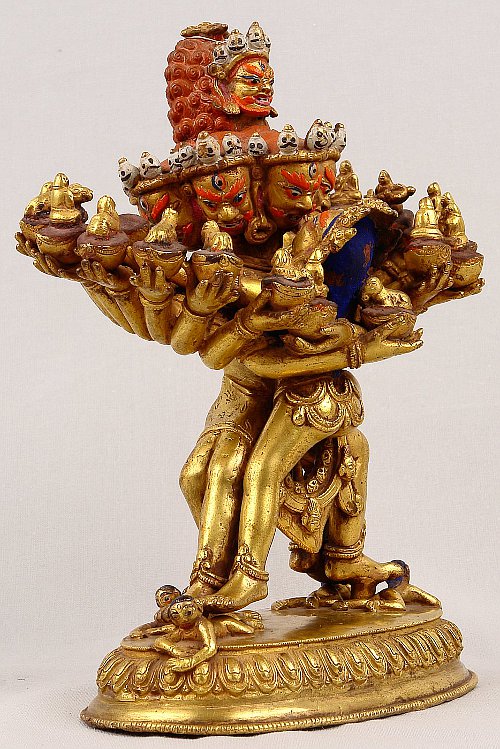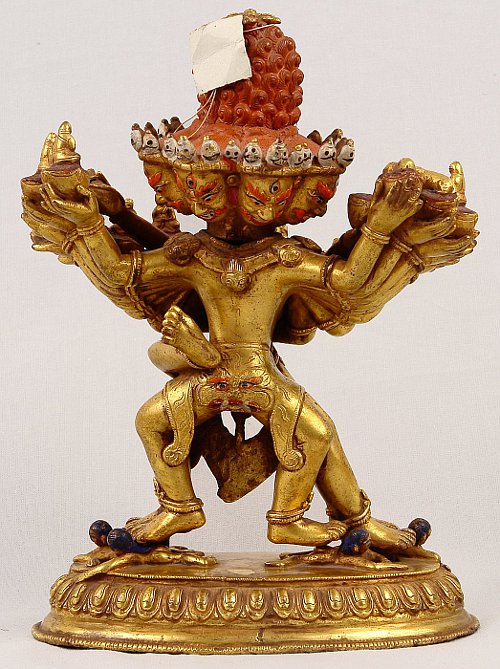| Next > |
|---|
 Hevajra is one of these wrathful deities of tantric Buddhism, common in Tibet, Mongolia and Nepal.
Hevajra is one of these wrathful deities of tantric Buddhism, common in Tibet, Mongolia and Nepal.
The guy has usually 16 arms - minimum of two - and eight faces and four legs. He is from the 'Yidam' class of deities. These are fierce looking beings whose official job is the protection of Buddhism. Hevajra is popular among Tibetan Buddhists and can be found frequently depicted on Himalayan art objects.
Hevajra from the Heruka Family
Hevajra is always shown in sexual intercourse with his 'girl friend' ('prajna', consort) Nairatmya. When he is alone he is no longer called Hevajra, but Heruka. Funny. Or better not funny. For me it is one of these thousand details that are so confusing when you just want to get to know the gist of Tibetan and Buddhist culture, religion and arts and crafts.
The sexual position practiced by Hevajra and Nairatmya is called yab-yum. But that is another article to read.
Hevajra Statues and Thangkas
Hevajra is the Indian Sanskrit name. Needless to say that there is a different name in the Tibetan language and writing. I found the name 'kye rdo rje' for Tibetan. But I am sure there are more than half a dozen different writings.
From a purely esthetic aspect I have always been fascinated by Tibetan art objects showing these awesome 'yidam' class deities with their multitude of arms, heads and legs. As an all-handmade Nepal statue, Hevajra requires certainly the utmost of artisan skill and effort. If you should ever have seen under which primitive conditions and with simplest tools these statues are created, you can only bow in awe in front of such mastership.
The immense skill and time-intensive labor is also one of the reasons why such statues have become rare. And the second reason is that demand has dwindled. Western tourists rather prefer a peaceful looking Buddha statue or statues of the Green or White Tara. Thus this craft is doomed. Why should the Nepali artisans create a statue that takes 5 times longer to produce and that nobody wants? A pity in my view. But that is the course of life.
As for Tibetan thangkas by the way, you have one more clue to identify Hevajra - the color. To my knowledge he is always (?) shown in blue.
Dieter Wanczura, August 2010.















